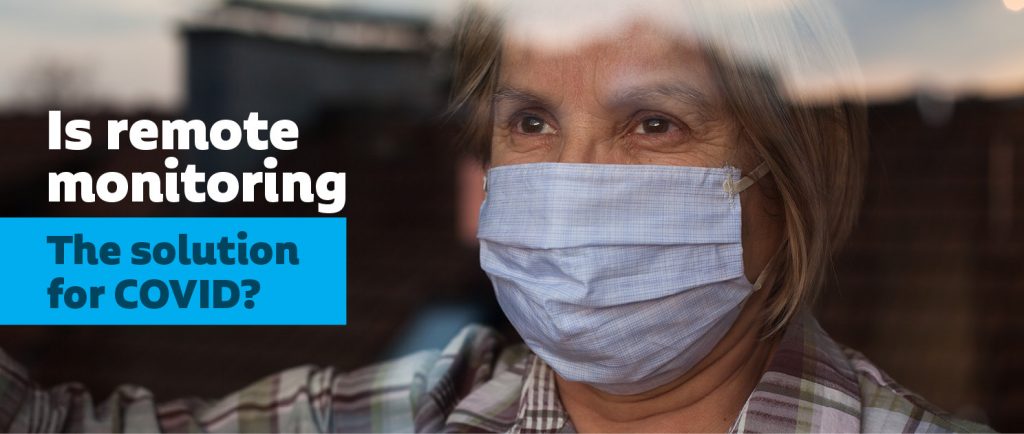Main Menu
Posted by Vayyar
November 24, 2020Keeping The Senior Living Sector Safe From COVID-19

As the world digs in to battle COVID-19, it is clear that the senior living sector has been disproportionately impacted.
In fact, 8 out of 10 US COVID-19 deaths have been of people aged 65 and older, despite seniors making up just 16% of the population. To date, there have been around 175,000 deaths of older adults in the US due to COVID.
The pandemic has killed more older Americans than stroke or Alzheimer’s did in 2018, according to the CDC.
What’s more, deaths in nursing homes and assisted living facilities account for 42 percent of the US total. With roughly 1.5 million seniors living in nursing homes and another 1 million in assisted living facilities, the question becomes how operators can better protect their residents.
COVID-19’s impact on senior living facilities
Senior living operators have been forced to confront the reality that they were under-prepared for the pandemic. While many had treatment, safety and recruitment plans in place, state policies of placing patients in nursing homes made it nigh-on impossible to control the rate of infection while dealing with the symptoms of COVID-19 in elderly residents.
Coupled with fast-changing government guidelines and a lack of clear action plans from federal and state agencies, it wouldn’t be unfair to say that senior living communities were faced with an impossible situation.
It is also likely that staff played a part in inadvertently spreading the virus to other residents.
As a result, many people over the age of 65 are now understandably fearful about their chances of surviving COVID in communal settings and are therefore reluctant to enter senior living facilities, preferring to stay at home.
This is having a severe effect on the sustainability of many facilities, already struggling with historically low occupancy and churn rates. Considering these factors and the ongoing threat of COVID, many operators feel compelled to seek out innovative solutions to bring in new residents and increase existing residents’ length-of-stay.
Remote monitoring offers a solution
In light of COVID-19, many senior living management teams are faced with pressing questions, such as:
- How to prevent infection in elderly residents?
- What is a better way to monitor residents?
- How can we reassure people that they will be safe in communities and will not be exposed?
One answer to these questions is remote monitoring.
With the right real-time data, facilities can focus on providing prompt and appropriate care when it’s needed most, rather than having staff enter rooms unnecessarily and risk both their own health and that of other residents.
A system of “smart rounds” could be the key to containing and ultimately defeating COVID-19 in the places it has had the most devastating impact.
Vayyar Care provides an answer
One solution that enables remote monitoring is Vayyar Care, a touchless technology that passively and unobtrusively monitors the status and overall well-being of a patient in a nursing home or assisted living facility.
Eliminating the need for cameras, wearables and buttons, small sensors powered by extremely safe radio frequency technology provide rich data to instantly detect falls and alert caregivers. Additionally, Vayyar’s sensors also can prevent future problems by providing operators with behavioral data such as:
- the number of visits to the bathroom
- time spent in and out of bed, and
- time spent alone in the room.
This enables operators to provide assistance when necessary to those that truly need it, slashing the number of unnecessary entrances into residents’ living spaces and limiting exposure.
It also means operators better understand their residents, leading to improved customer satisfaction and enhancing their brand reputation.
Keeping the senior living sector safe
The COVID-19 pandemic has hit the elderly population hard, especially those living in nursing homes and assisted living facilities. Operators therefore need to deploy robust technologies that reduce the risks posed by person-to-person contact, while ensuring that residents always receive the timely, quality care they need – the main reason they came to the facility.
When taking the COVID risk by age into consideration, minimizing exposure is key. Through data-driven remote monitoring, senior living facilities may yet emerge from the COVID-19 crisis stronger and more resilient than ever.
Is your senior living community looking to slash infection rates and help prevent exposure among residents and staff? Learn how Vayyar Care can support you with the crucial data you need to improve wellbeing while lowering operational costs.
The Post URL was successfully copied to your clipboard
Read more on #elderly care

08 October 2024
Recruit, reinforce, and retain should be the mantra of any hiring manager.…
Read more
05 August 2024
We’re living longer, not healthier. Over 95% of people aged 65 or…
Read more
17 June 2024
Senior living occupancy has recovered from the perfect storm it weathered in…
Read more
12 May 2024
Artificial Intelligence is on the verge of revolutionizing fall prevention in elderly…
Read more
